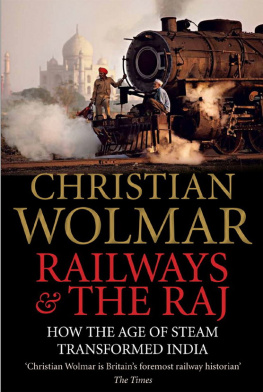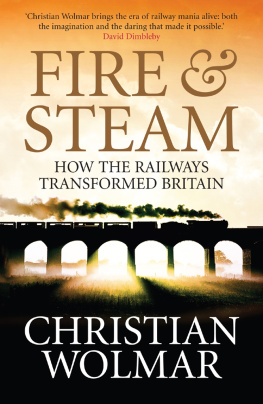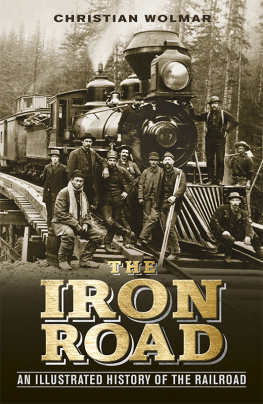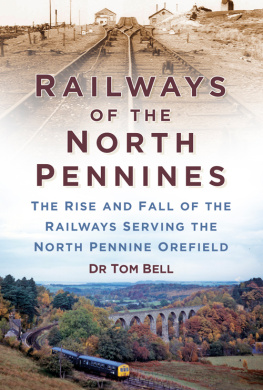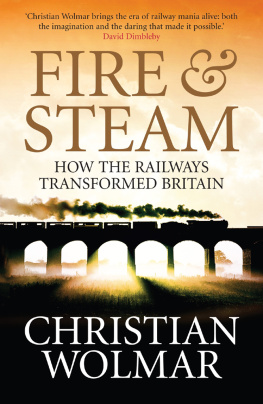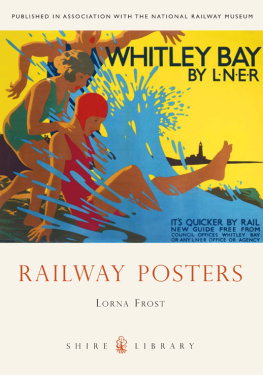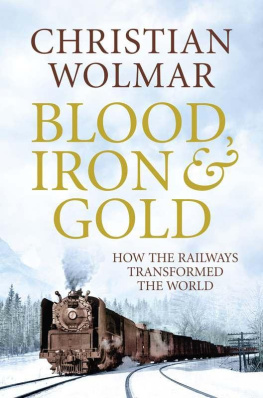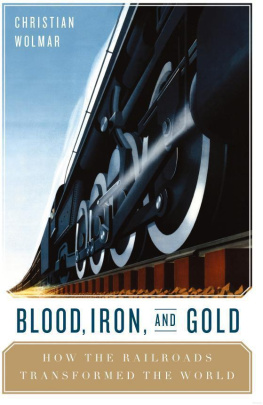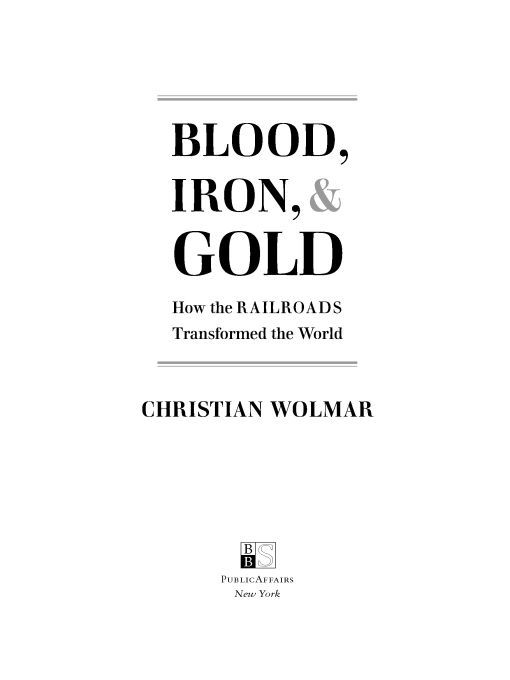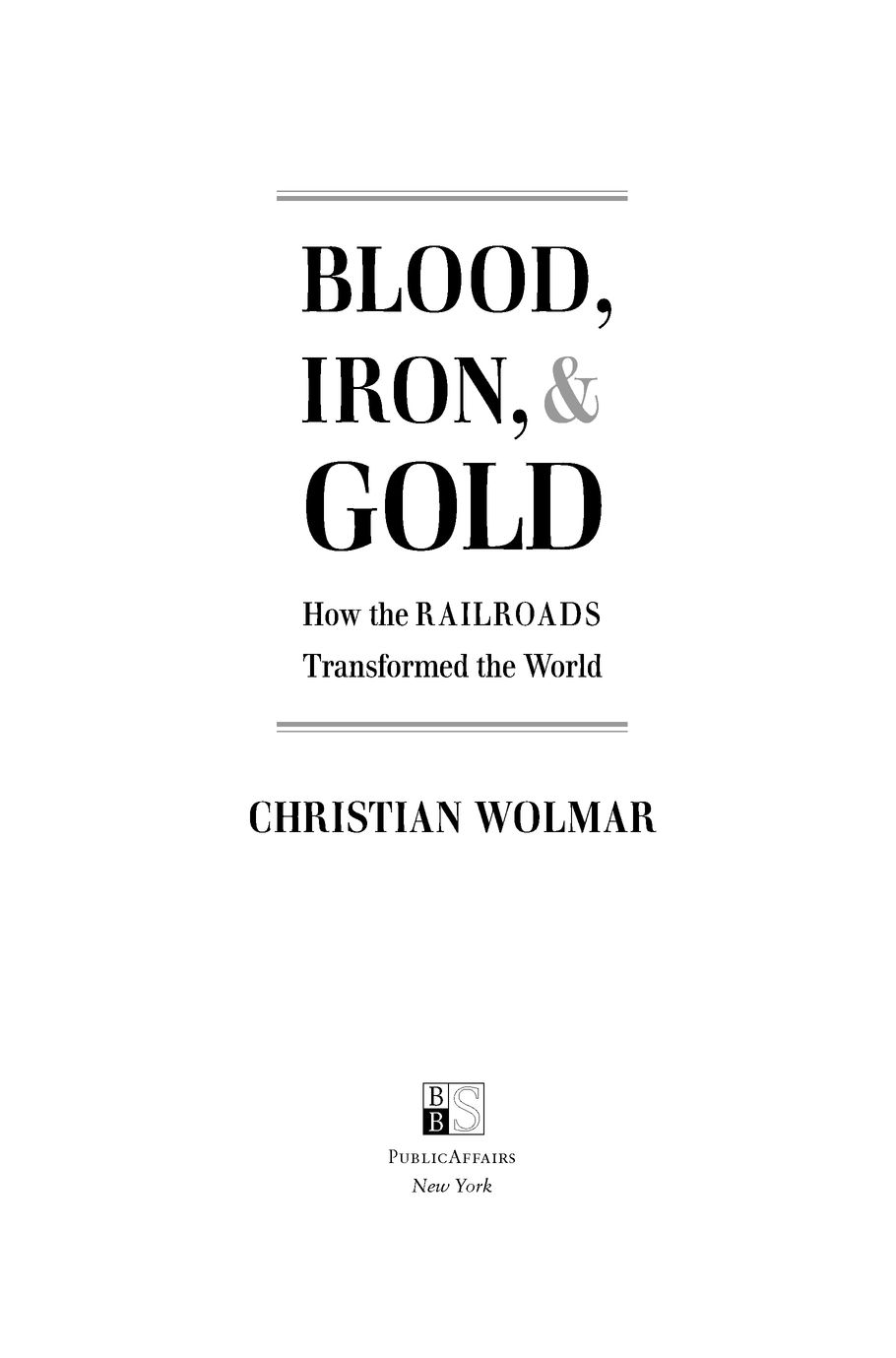Table of Contents
Also by Christian Wolmar
Fire & Steam
The Subterranean Railway
On the Wrong Line
Down the Tube
Broken Rails
Forgotten Children
Stagecoach
The Great Railway Disaster
Dedicated to my wonderful Deborah,
who puts up with my obsessions and foibles,
and inspires me to keep going.
PREFACE
Trying to draw together the history of the railways across the world and to demonstrate their enormous impact globally in one relatively short volume has been a daunting task but one that is eminently worthwhile. Of course, it means I have made no attempt to be comprehensive and have found enormous difficulties in selecting which stories to tell from the myriad accounts that the 180-year history of the railways has generated. Certain tales, however, had to be included, such as the genesis of various railways, the development of the major European networks, the influence of British technology in so many countries, the creation of the huge systems in India and, much later, China, as well as the building of the great transcontinental lines in Russia and the United States. It was essential, too, to outline the way that the railways progressed, becoming faster, more comfortable, and safer.
I have eschewed nostalgia. Although this book inevitably evokes the past, occasionally even wistfully, it is about the way the railways transformed peoples lives and were a catalyst for a whole range of other changes. The impact of the railways is almost impossible to exaggerate. To understand the way they changed the world, put yourself in the position of a person who had never seen a large machine, nor traveled in or witnessed anything faster than a galloping horse. Their horizons were necessarily limited, and the arrival of the iron road changed that forever.
There are many books with titles like The Worlds Railways or Tracks Around the World, but most either celebrate the technology of trains or only give cursory accounts of their social impact. I have attempted to show how the railways helped to create the world we live in and stimulated development and change in virtually every country. It has been a gargantuan task, but hopefully this book will at least give a taste of the importance of the iron road and of the very enduring nature of an invention that went completely out of fashion in the second half of the twentieth century but is enjoying a fantastic renaissance.
It is easier to list what the railways did not change than to set out their achievements. Quite simply, between the first quarter and the last quarter of the nineteenth century, the railways transformed the world from one where most people barely traveled beyond their village or nearest market town to one where it became possible to cross continents in days rather than months. Their development created a vast manufacturing industry that ensured that the Industrial Revolution would affect the lives of virtually everyone on the planet. Everything from holidays to suburban sprawl and from fresh milk to mail order was made possible by the coming of the railways.
And this was on a global scale. Between 1830, the opening of the Liverpool & Manchester Railway, the worlds first twin-tracked and fully locomotive-hauled railway linking two major towns, and the turn of the century, well over 600,000 miles of railway were built around the world, and few countries were left without at least a section of track. Indeed, as this book shows, the railway penetrated far beyond the obvious places, reaching heights and remote corners of the world that seemed impossible. And everywhere that a spectacular railway was built, there would be an amazing group of men who battled to overcome the obstacles. Of the major schemes covered in this book, virtually every one, except for the Cape to Cairo lines, was completed.
I have focused less on the United Kingdom than on the world as a whole because I have covered Britains railways in great detail in my previous book, Fire & Steam. Britain was a pioneer in many respects because it was not only home to the worlds first major railway but also the country that developed the technology and operational practices that spread around the world. Britains story cannot be omitted entirely, but this book somewhat understates the importance of its railways and its role in the development of rail networks around the world.
I have concentrated particularly on the great railways, the ones that were built in the most onerous and difficult conditions but that transformed their nations, such as the Indian, American, and Russian systems. Just think of the imagination and breadth of ambition that led to the construction of the Trans-Siberian, or, indeed, the network of lines linking Indias great cities. The story of these railways deserves to be set out in some detail to celebrate their construction.
There is, for example, far more on the American railroads in this book than on those of many other countries. But there are good reasons for this. At its peak, the U.S. railroad system represented about a third of the worlds total mileage. It contributed to the very creation of the globes most powerful nation, as explained in Chapter 4. Admittedly, too, there is a more comprehensive and accessible literature on U.S. railroad history than on any other countrys, and the availability of good studies on various railways has meant that on occasion I have given them disproportionate coverage.
Everyone has a pet railway or favorite journey, and I am bound to have left some out. I have not, for example, mentioned the Indonesian railways, which, built by the Dutch, were reportedly among the best narrow-gauge railways in the world before World War II. Turkey and the rest of the Middle East barely get a mention; neither does the Philippines. Nor have I included the story of many strange and wonderful lines, such as the overhead railway in Wuppertal near Dsseldorf, which has been operating since 1901 and still carries thousands of commuters daily. But most significant railways are given some space, whereas others that may not really be as important have been accorded lots of space because there is a good story to tell and the information is accessible. Indeed, if you are a budding railway author, there are lots of social histories of railways around the world remaining to be written to add to the few that I have managed to track down. Much of railway literature is written for what a fellow author termed rivet counters, and that is a wasted opportunity. The railways deserve better histories than simple accounts of their construction and technology, and I have listed a few in the bibliography.
I have set out the early history of the railways in Chapter 1, covering in brief the opening of the Liverpool & Manchester and the start of railways in several other European countries. Many early railways were created with freight in mind, but it is remarkable how quickly they attracted passengers, and this, in turn, stimulated the spread of the iron road. Although the early railways used or copied British technology, several different railway traditions soon established themselves. These are examined in the next three chapters. Chapter 2 covers the establishment of the European tradition. These railways were built to more generous proportions, and states tended to be far more involved in their creation on the Continent than in Britain. They were used as a deliberate political tool to unify nations that for the most part still had unstable borders. Chapter 3 looks at the spread of the British railway style, notably in India, where the colonial power designed and built a system that also helped to forge a nation. This chapter also covers Ireland and Australia. Chapter 4 is devoted to the United States. It reminds us of the importance of the railways to the development of the country, which is now largely forgotten. It also covers the crucial role played by the railways in the Civil War and their contribution to the ultimate victory by the North. The American way was different from the European traditions, with heavier locomotives, cheaper track that limited speed, and open-plan carriages rather than the compartments favored in Europe.


